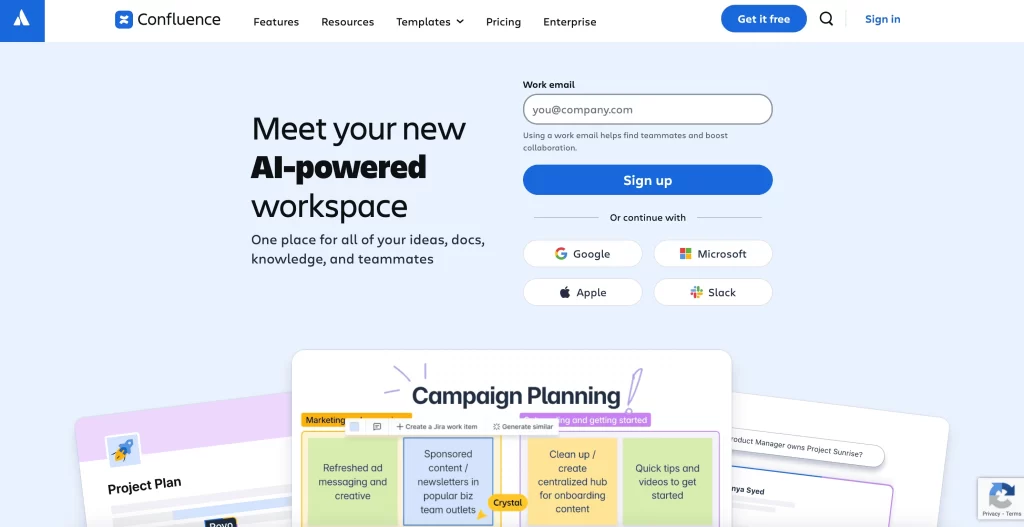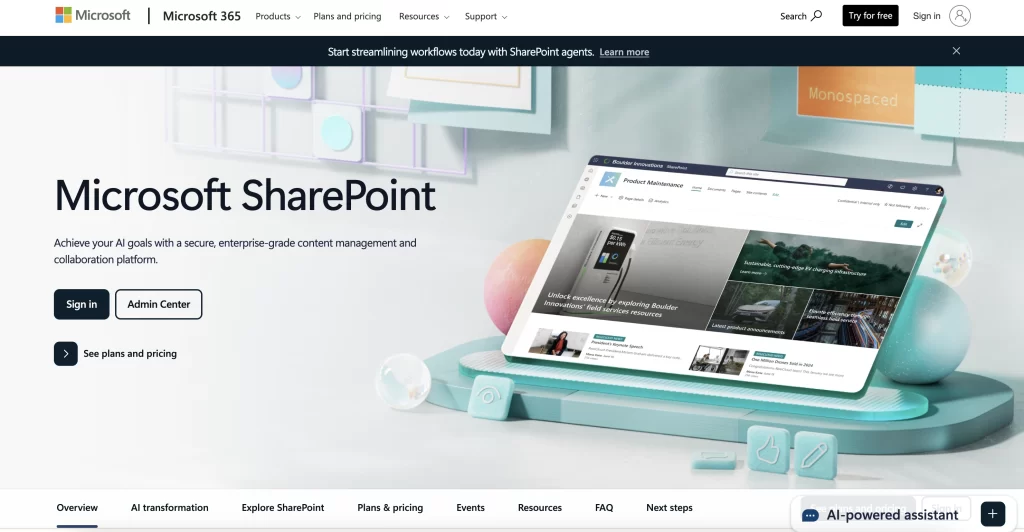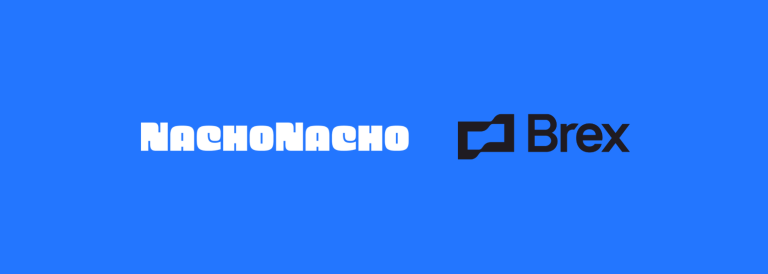Confluence vs Sharepoint Comparison: Pricing, Features, Discounts
Atlassian’s Confluence and Microsoft’s SharePoint are prominent options in the market, both with great features and integrations. But which one is better for your needs?
The main reason why businesses choose one over the other is that Confluence integrates natively into the Atlassian ecosystem, while SharePoint integrates into the Microsoft ecosystem.
Keep reading to deep dive into the differences in pricing, features, and more.
Confluence vs. SharePoint differences summary table
| Feature | Confluence | SharePoint |
|---|---|---|
| Core Purpose | Wiki & Knowledge Base | Document Management & Intranet |
| Primary Users | Software/IT teams, teams valuing open collaboration | Enterprises with strict governance needs, existing Microsoft 365 users |
| Ease of Use | High (low learning curve, intuitive) | Moderate (powerful but complex) |
| Document Mgmt. | Basic versioning, page history | Robust versioning, check-in/out, audit trails |
| Search | Powerful, AI-powered “Atlassian Intelligence” | Enterprise-grade, indexes content across Microsoft 365 |
| Integrations | Atlassian Suite (Jira, Trello) | Microsoft 365 Ecosystem (Teams, Office, Power Apps) |
| Pricing | Standalone, tiered per-user basis (free tier available) | Bundled with Microsoft 365 plans |
What are the key differences of Confluence vs SharePoint?
Confluence
Confluence operates as a dynamic, user-friendly wiki. Its core strength lies in democratized content creation, documentation, and open team collaboration. It is built for seamless integration with the Atlassian suite, making it the preferred choice for software development and IT teams who rely on tools like Jira and Trello.

SharePoint
SharePoint is a robust, enterprise-grade platform for document management, intranets, and team sites. It is tightly integrated with the Microsoft 365 ecosystem, offering advanced governance and security features. Its strength is in providing a centralized, highly controlled environment for managing official documents and building a company-wide information hub.

Pricing and Licensing
Confluence pricing
Confluence offers a free tier for up to 10 users. Paid plans (Standard, Premium) are tiered on a per-user basis, with prices scaling up for larger organizations. The Premium plan unlocks unlimited whiteboards, advanced automations, and AI features like Rovo.
1. Free Plan
- Price: $0
- Best For: Individuals and small teams getting started.
- User Limit: Up to 10 users.
- Storage: 2 GB of file storage.
- Key Features: Unlimited spaces and pages, basic collaboration tools, and support from the Atlassian Community forum.
2. Standard Plan
- Price (Starting): Approximately $5.16 per user per month (billed annually, varies with user count).
- Best For: Growing teams that need more control and structure.
- User Limit: Supports up to 150,000 users.
- Storage: 250 GB of file storage.
- Key Features: All Free plan features plus:
- Page and space permissions.
- Standard customer support (9 am – 5 pm local business hours).
- Audit logs and archiving.
- Data residency options.
3. Premium Plan
- Price (Starting): Approximately $9.73 per user per month (billed annually, varies with user count).
- Best For: Scaling organizations that require high availability, advanced tools, and dedicated support.
- Storage: Unlimited file storage.
- Key Features: All Standard plan features plus:
- 24/7 Premium Support.
- Financially backed 99.9% uptime SLA.
- Advanced site and space analytics/insights.
- Advanced administrative controls (e.g., Inspect permissions, Sandbox environment).
- Higher automation rule limits (e.g., 1,000 rule runs per user/month).
4. Enterprise Plan
- Price: Custom pricing (Upon request).
- Best For: Global businesses with complex security, compliance, and multi-instance needs.
- Key Features: All Premium plan features plus:
- Centralized user billing for multiple Confluence instances.
- Enhanced 99.95% uptime SLA.
- Atlassian Guard Standard included (for enhanced security and centralized oversight).
- Multiple app instances (up to 150) under the same plan.
SharePoint pricing
SharePoint is not typically a standalone purchase. It is most often included as part of a Microsoft 365 Business or Enterprise plan, which bundles a wide range of products (Word, Excel, Teams, etc.). This makes it a cost-effective solution for companies already invested in the Microsoft ecosystem. Note that additional costs can be incurred for storage overages and advanced management add-ons.
SharePoint Online (Plan 1): $5.00
- Best for: Small-to-mid-sized businesses needing secure file sharing and basic collaboration.
- Key Features: Basic document sharing, mobile apps, file storage, team sites, and document libraries with version control.
SharePoint Online (Plan 2): $10.00
- Best for: Larger organizations requiring more advanced capabilities.
- Key Features: Everything in Plan 1, plus unlimited storage, advanced search, eDiscovery, and advanced compliance tools.
Core Purpose of Confluence vs SharePoint
Confluence
This tool is built on the “wiki” model. Its philosophy is one of open, living, and democratized content, empowering teams to create, share, and find information quickly with a low barrier to entry. It is designed for fluid, bottom-up knowledge sharing where the content is a living asset that is constantly updated by the team.
SharePoint
In contrast, SharePoint follows a “document repository and intranet” model. Its foundation is built on control, structure, and governance. The platform provides robust versioning, check-in/check-out, and granular permissions, making it ideal for managing official, high-stakes documents that require strict control and auditing.
How is the user experience different?
Confluence is known for its simple and intuitive user experience, while SharePoint is powerful but can be complex.
Here’s why.
Confluence’s modern editor, page tree structure, and ready-to-use templates make it easy for non-technical users to start creating content immediately. Teams generally can start using it quickly, and the learning curve is simpler.
On the other hand, the rich features for document libraries, lists, and pages from SharePoint can be overwhelming for new users. It often requires more administrative overhead and training to be implemented and used effectively, but offers a greater degree of customization and flexibility.
Key feature comparison
Let’s take a closer look at how these two platforms compare when it comes to their main features.
Document Management
If record-keeping is your main concern, then we suggest you watch our recent conversation below with Toshendra Sharma, founder of RecordsKeeper.AI (on NachoNacho with 25% off), to learn how AI is redefining enterprise record management. This will help you gain a better understanding of the future of effective record management.
For this category of features, Confluence offers basic versioning and page history, making it suitable for collaborative document creation, like meeting notes and project plans.
But for a large volume of official, version-controlled documents, it is not a dedicated document management system.
SharePoint is a true document management system, providing:
- Robust versioning
- Check-in/check-out
- Legal/compliance-grade audit trails
Its advanced metadata features for searching and filtering are also a significant advantage, as is its co-authoring experience is seamless with other Microsoft Office applications.
Real-time collaboration
Both Confluence and SharePoint offer real-time collaboration capabilities, but they approach it from different angles based on their core functionality and platform ecosystem.
Here is a comparison of their real-time collaboration features:
| Feature | Confluence (Knowledge & Documentation Focus) | SharePoint (Document Management & Intranet Focus) |
| Real-Time Co-editing | Excellent and central to the experience. Multiple users can edit the same page simultaneously, with changes being saved incrementally and visible to all collaborators in real-time. This is a core feature for the wiki-style documentation that Confluence is designed for. | Excellent via Microsoft Office Integration. Real-time co-authoring is seamless on Office documents (Word, Excel, PowerPoint) stored in SharePoint document libraries, leveraging Office Online. Users can see changes, who is editing, and comment inline. |
| Area of Focus | Real-time editing is focused on Confluence pages, which are typically text-based documentation, notes, wikis, and structured knowledge. | Real-time co-authoring is primarily focused on Microsoft Office files (documents, spreadsheets, presentations), which aligns with SharePoint’s strength as a document management system. |
| Contextual Discussion | Offers inline commenting, mentions, and notifications directly within the page content. This encourages back-and-forth discussion within the context of the document. | Inline commenting and mentions are supported primarily within the Office documents (Word, Excel, etc.). SharePoint itself also integrates with Outlook and Microsoft Teams for alerts and notifications, and has a built-in chat feature. |
| File Collaboration | Confluence’s primary focus is on collaborative content creation (pages), not file management. While files can be attached, real-time co-authoring functionality for attachments like native Word or Excel files is generally not supported natively. | SharePoint is fundamentally a robust document management system. It offers check-in/check-out and granular versioning for documents, which supports a more controlled and structured approach to document collaboration alongside real-time co-authoring. |
| Ease of Use for Collaboration | Generally considered more intuitive and easier to adopt for real-time wiki-style content creation. The simplified page editor and focus on content collaboration make it easy for teams to start documenting immediately. | The collaboration experience, especially co-authoring, is seamless if the organization is already deeply invested in the Microsoft 365 ecosystem (Office, Teams, OneDrive). However, the overall platform has a steeper learning curve due to its extensive features and structure. |
Export to Sheets
Knowledge Base & Wikis
Knowledge bases and wikis are a core strength for Confluence since the entire platform is a wiki, featuring the new AI-powered “Atlassian Intelligence” tools, powerful editors, and templates. All of this makes it great for:
- Technical documentation
- Company handbooks
- Team knowledge bases
SharePoint also has wiki capabilities, but many teams use it more as a file share, and its wiki pages often lack the user-friendly flow and collaborative features of Confluence.
Search Functionality
SharePoint is an enterprise search leader, powered by Microsoft Search and the Microsoft Graph, so it can index and search content not just within SharePoint, but across the entire Microsoft 365 ecosystem, including Teams, Outlook, and OneDrive. So, if you use the Microsoft ecosystem, then SharePoint’s search functionality would work better for you.
Confluence search is also powerful, especially with the introduction of Atlassian Rovo, which uses AI to deliver more accurate, intent-based results from across your Atlassian ecosystem. So, the same thing applies here: if you use the Atlassian ecosystem, then Confluence has an advantage for you.
Integrations and Ecosystem
As you already know, both of these tools are deeply integrated with their respective ecosystems.
Confluence is deeply and natively integrated with the Atlassian suite (Jira, Trello, Bitbucket), while Sharepoint is natively integrated with the Microsoft apps (Teams, OneDrive, Office apps, and Power Automate, Power BI). The introduction of a SharePoint Agent and new Copilot integrations further deepens its ties to the Microsoft stack.
Beyond that, these are some integrations you can also get with these platforms.
Confluence integrations:
- Slack
- Google Drive (or Google Workspace)
- Microsoft Teams
- GitHub
- Zendesk
- Balsamiq Wireframes
- Twilio
- n8n
SharePoint integrations:
- Salesforce
- Slack
- Zoom
- Oracle
- Xero
- Trello
- Monday.com
- Zendesk
- YouTube
The Verdict: Which One Should You Choose?
- Choose Confluence if:
- Your primary need is a powerful, user-friendly knowledge base or wiki.
- You are a software development team or your company already uses the Atlassian suite.
- Your team values a low learning curve and a simple, focused interface for content creation.
- Choose SharePoint if:
- Your organization is already heavily invested in the Microsoft 365 ecosystem.
- You need robust, enterprise-grade document management with advanced security, permissions, and compliance features.
- You require a single platform to build a company-wide intranet and manage official documents.
Why not save money on both of these tools?
With NachoNacho, you can save big on both of these tools and their ecosystems by simply subscribing through our platform. You can get 12 months free on all Atlassian products, or 15% off on Microsoft 365.
Ultimately, the “better” platform depends entirely on your specific business needs, existing technology stack, and company culture.
This guide should serve as a starting point to evaluate which tool aligns best with your team’s workflows and long-term goals.
Let us know if you have any questions about the redemption process!

Written by Andres Muñoz
If you would like to receive the latest deals added to NachoNacho, make sure you sign up for our newsletter below. We’re adding amazing software discounts you can’t miss!
Sign up for our newsletter







